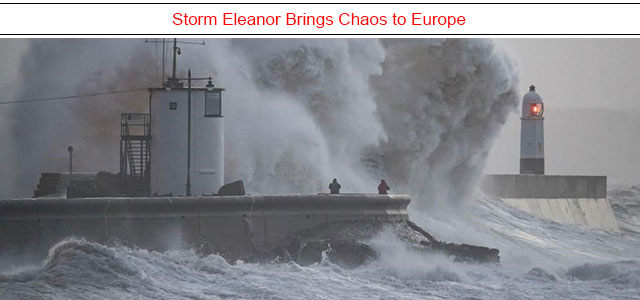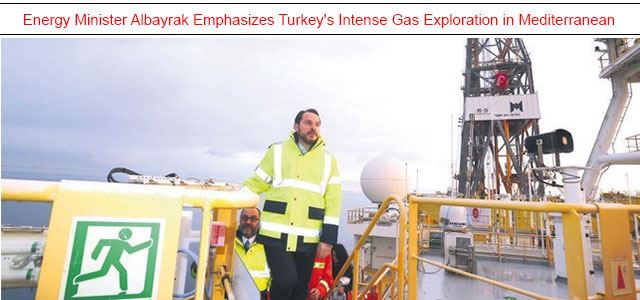
Winter storm Eleanor swept across Europe on Wednesday, bringing death, damage and disruption, snarling transport networks and cutting power to tens of thousands of people. Two people died on Spain's northern Basque coast, the couple swept away by a huge wave, officials said, and another person had to be rescued after attempting to save them.
In France, a 21-year-old skier was killed by a falling tree at Morillon in the Alps where dangerous conditions forced the closure of several resorts. More than a dozen others were injured by the storm across France, four seriously, civil defense spokesman Michael Bernier told AFP as the country was lashed by what meteorologists termed the strongest winds in eight years.
On the French Mediterranean island of Corsica, where gusts of up to 140 kilometers per hour (85 miles per hour) were recorded, winds fanned the flames of forest and scrub fires started by downed power lines, leaving three people injured.
At Lenk in central Switzerland, eight people were hurt when a violent gust of wind overturned a railway carriage while one person was injured by a falling tree in the southern Dutch village of Heesch. Heavy winds forced authorities to close the airports in Strasbourg and Basel-Mulhouse on France's border with Germany and Switzerland before they were reopened shortly after midday.
At Paris's Charles de Gaulle airport, most departures were delayed Wednesday morning and a handful of flights had to be rerouted before the winds eased. The weather wreaked havoc with train services and motorway access in several French regions, the result of fallen trees, electrical lines and other debris.
About 225,000 homes across France were without electricity, while "particularly intense" flooding was expected on the Atlantic coasts. The Eiffel Tower had to turn away tourists in the morning because of the gusts before reopening later.
Hail, thunder and lightning
Eleanor barreled into continental Europe after whipping across England and Ireland, with the Thames Barrier, one of the largest movable flood barriers in the world, closed as a precautionary measure to protect London from swelling tides.
"We have seen some heavy showers push through across the south of the UK along with hail, loud thunder and lightning," said meteorologist Becky Mitchell. Gusts of 160 kph were recorded at Great Dun Fell in Westmorland, northwest England, while overturned vehicles and trees caused closures of major motorways.
In Ireland, power supply company ESB said electricity had been restored to 123,000 customers, while 27,000 remained without power. Streets around the docks in Galway on the west coast were flooded after high tides breached the sea defenses, prompting the deployment of about two dozen troops to support flood defense efforts.
Belgium and parts of Spain were also put on "orange" alert, the third of four warning levels, with officials urging people to exercise caution when venturing out.
In the Netherlands, more than 250 flights were cancelled at Amsterdam's Schiphol airport, a key European hub, as weather alerts were issued for several regions. Dutch authorities for the first time closed all of the five storm surge barriers on the country's North Sea coast, the transport ministry said.
Flights were also disrupted at Frankfurt's airport in Germany, where the storm has been baptized Burgling, and at Zurich airport, as Swiss officials urged hikers to avoid forest walks. RTS television reported that about 14,000 homes were without power in several Swiss cantons.
Most ski resorts in the Swiss and northern French Alps, where gusts reached 250 kph at Les Arcs resort. "You're better off staying in front of the fire today," said David Penson, a ski official in Savoy.
Eleanor is the fourth major storm to hit Europe since December.
Source: Times LIVE




